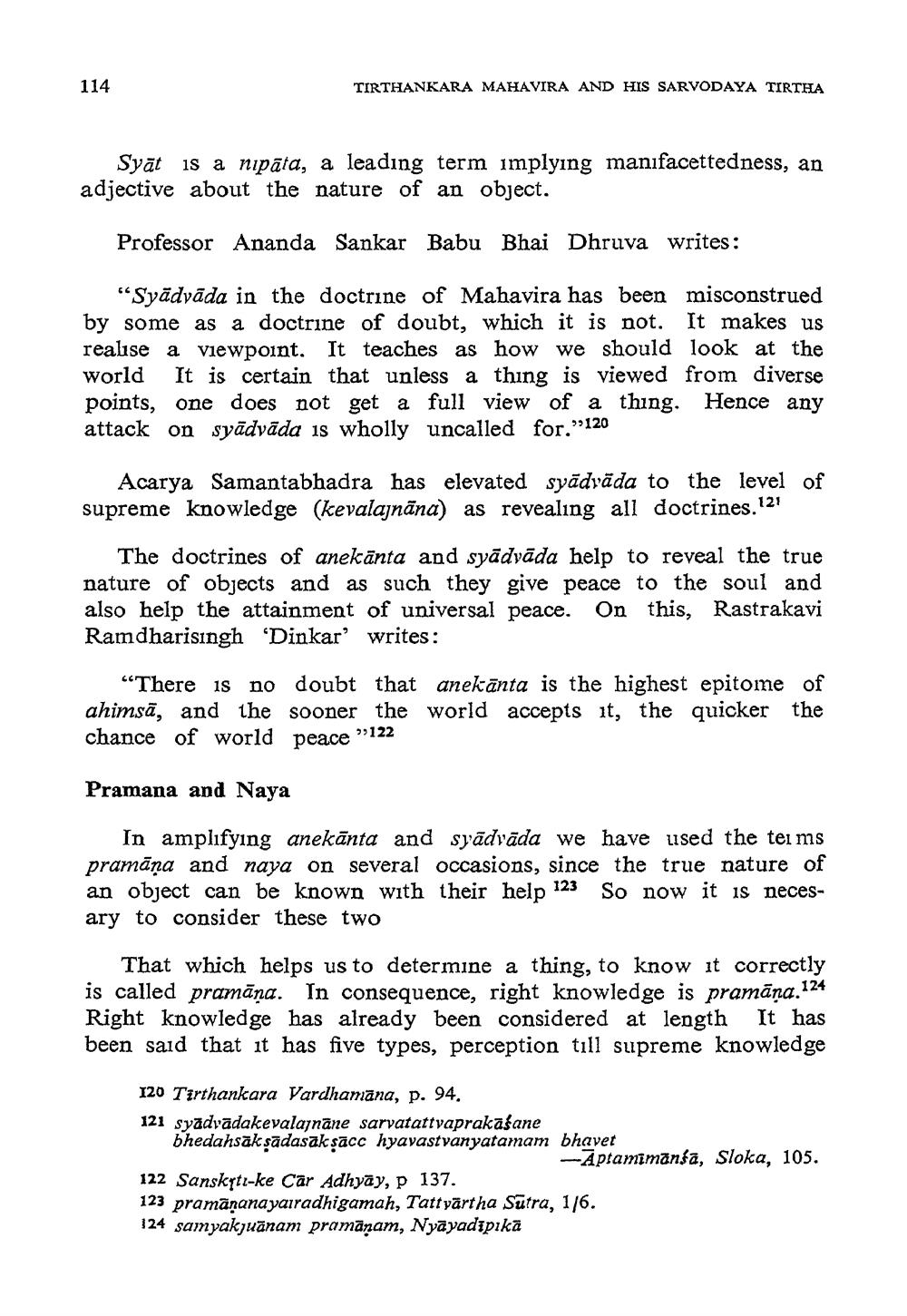________________
114
TIRTHANKARA MAHAVIRA AND HIS SARVODAYA TIRTHA
Syāt is a nipāta, a leading term implying manifacettedness, an adjective about the nature of an object.
Professor Ananda Sankar Babu Bhai Dhruva writes:
“Syädyāda in the doctrine of Mahavira has been misconstrued by some as a doctrine of doubt, which it is not. It makes us realise a viewpoint. It teaches as how we should look at the world It is certain that unless a thing is viewed from diverse points, one does not get a full view of a thing. Hence any attack on syādvāda is wholly uncalled for."120
Acarya Samantabhadra has elevated syādvāda to the level of supreme knowledge (kevalajnāna) as revealing all doctrines.121
The doctrines of anekānta and syādvāda help to reveal the true nature of objects and as such they give peace to the soul and also help the attainment of universal peace. On this, Rastrakavi Ramdharisingh ‘Dinkar' writes:
“There is no doubt that anekānta is the highest epitome of ahimsā, and the sooner the world accepts it, the quicker the chance of world peace "122
Pramana and Naya
In amplifying anekānta and syādvāda we have used the terms pramāna and naya on several occasions, since the true nature of an object can be known with their help 123 So now it is necesary to consider these two
That which helps us to determine a thing, to know it correctly is called pramāna. In consequence, right knowledge is pramāna. 124 Right knowledge has already been considered at length It has been said that it has five types, perception till supreme knowledge
120 Tirthankara Vardhamana, p. 94. 121 syadvadakevalajnāne sarvatattvaprakasane bhedahsākṣādasāk sācc hyavastvanyatamam bhavet
-Aptamimanša, Sloka, 105. 122 Sanskyti-ke Car Adhyāy, p 137. 123 pramānanayairadhigamah, Tattyärtha Sutra, 1/6. 124 samyakyuānam pramānam, Nyayadipika




